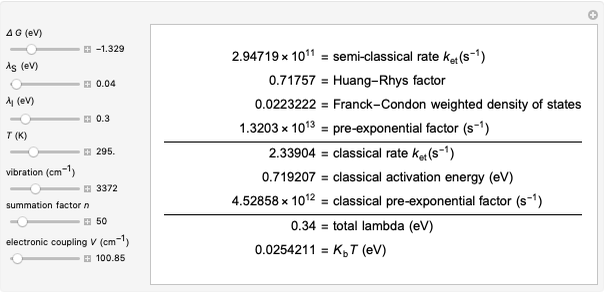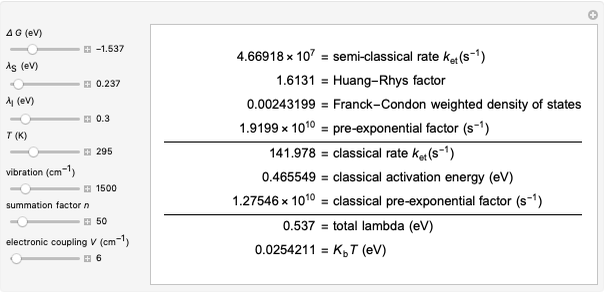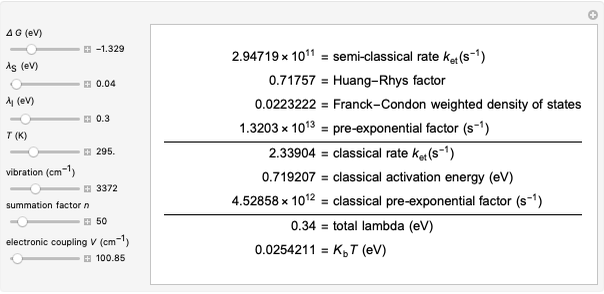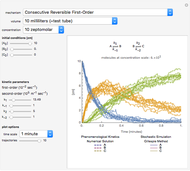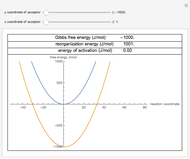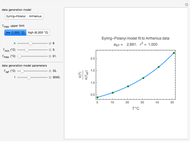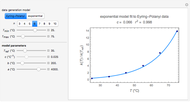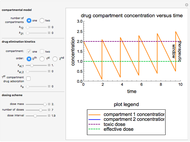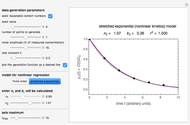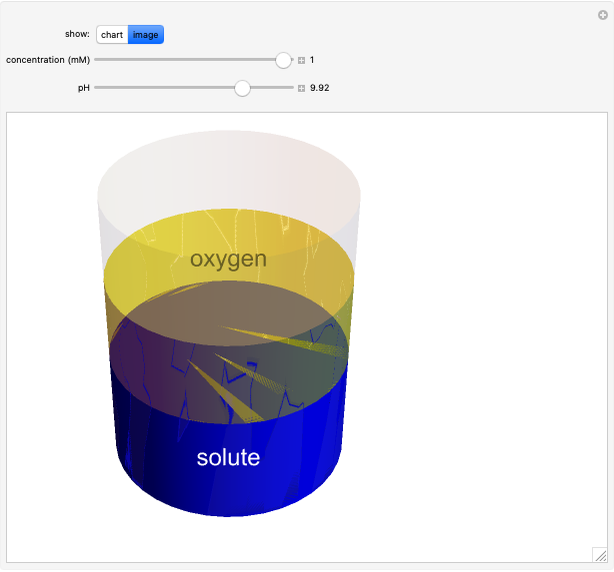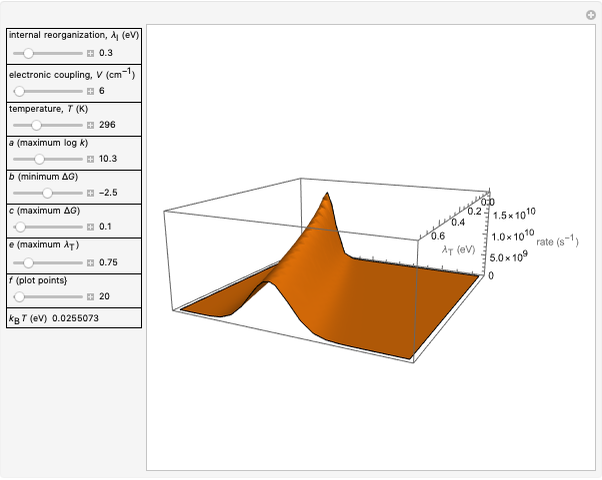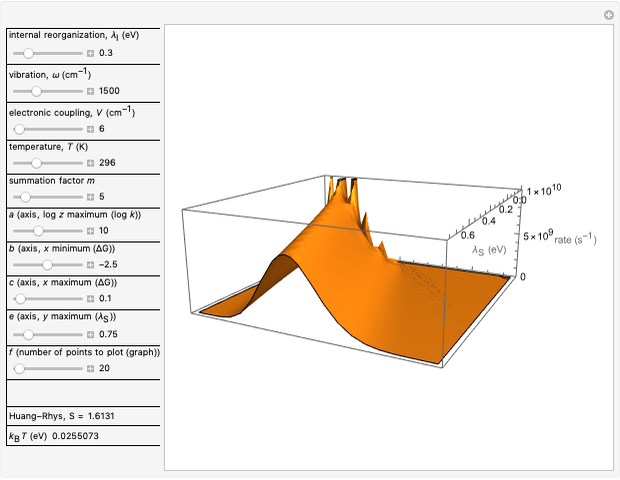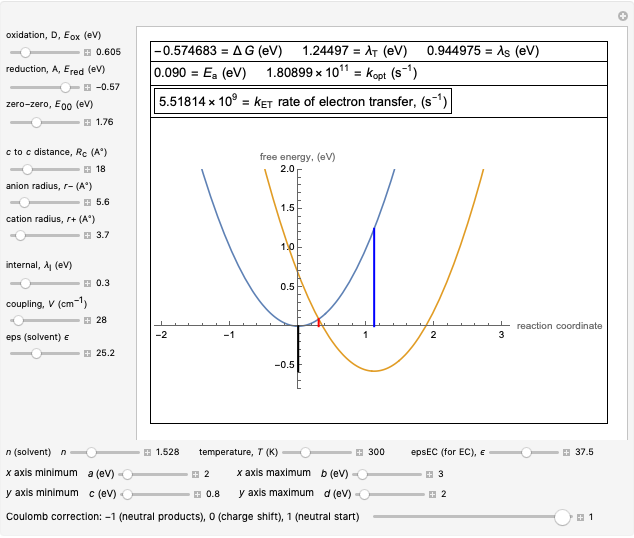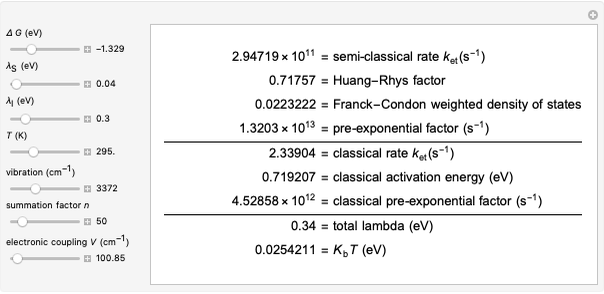Marcus Theory of Electron Transfer 1: Classical versus Semi-classical Models

Requires a Wolfram Notebook System
Interact on desktop, mobile and cloud with the free Wolfram Player or other Wolfram Language products.
Nobel Prize winner Rudolph Marcus developed the theory of electron transfer [1]. The classical Marcus equation (CME) is based on two simultaneous quadratic relations, involving the driving force ( ), the internal and external (solvent) reorganization energy (
), the internal and external (solvent) reorganization energy ( and
and  ) and the electronic coupling (
) and the electronic coupling ( ). The CME underestimates the electron transfer rate in the inverted region [2, 3]. This Demonstration compares rates predicted by the classical Marcus model with those using the semi-classical Marcus model (also called Marcus–Levich–Jortner Theory, MLJ) . The starting values are from the so-called Closs and Miller data [4], which provided the first experimental proof of the inverted region. We illustrate this with the isooctane data in Snapshot 1.
). The CME underestimates the electron transfer rate in the inverted region [2, 3]. This Demonstration compares rates predicted by the classical Marcus model with those using the semi-classical Marcus model (also called Marcus–Levich–Jortner Theory, MLJ) . The starting values are from the so-called Closs and Miller data [4], which provided the first experimental proof of the inverted region. We illustrate this with the isooctane data in Snapshot 1.
Contributed by: René M. Williams (August 2022)
Open content licensed under CC BY-NC-SA
Snapshots
Details
Snapshot 1: Data of the first experimental proof of the inverted region (focused here on the isooctane data), based on the work of Closs and Miller.
Snapshot 2: Data on charge recombination of the compound C60[3]TMPD in toluene as solvent. The total lambda is about  of
of  . The semi-classical rate is correlated with the experimental rate. The rate predicted by the CME is much too low (~2 times per second).
. The semi-classical rate is correlated with the experimental rate. The rate predicted by the CME is much too low (~2 times per second).
Snapshot 3: Data on charge separation for the compound C60[11]DMA in benzonitrile as solvent, correlated with the experimental rate.
Snapshot 4: Data on charge recombination for the compound C60[11]DMA in benzonitrile as solvent, correlated with the experimental rate.
The output of this Demonstration was checked against the R-package [10] that runs in the statistical software package R [11] for computing and graphics.
References
[1] R. A. Marcus, "Electron Transfer Reactions in Chemistry: Theory and Experiment (Nobel Lecture)," Angewandte Chemie International Edition, 32(8), 1993 pp. 1111–1121. doi:10.1002/anie.199311113.
[2] S. Chaudhuri, S. Hedström, D. D. Méndez-Hernández, H. P. Hendrickson, K. A. Jung, J. Ho and V. S. Batista, "Electron Transfer Assisted by Vibronic Coupling from Multiple Modes," Journal of Chemical Theory and Computation, 13(12), 2017 pp. 6000–6009. doi:10.1021/acs.jctc.7b00513.
[3] P. F. Barbara, T. J. Meyer, M. A. Ratner, "Contemporary Issues in Electron Transfer Research", Journal of Physical Chemistry, 100(31), 1996 pp. 13148–13168. doi:10.1021/jp9605663.
[4] G. L. Closs and J. R. Miller, "Intramolecular Long-Distance Electron Transfer in Organic Molecules," Science, 240(4851), 1988 pp. 440–447. doi:10.1126/science.240.4851.440.
[5] P. Hudhomme and R. M. Williams, "Energy and Electron Transfer in Photo- and Electro-active Fullerene Dyads," Handbook of Carbon Nano Materials (F. D'Souza and K. M. Kadish, eds.), Hackensack, NJ: World Scientific, 2011 pp. 545–591. doi:10.1142/9789814327824_0017.
[6] R. M. Williams. "Introduction to Electron Transfer," (Nov 11, 2021) doi:10.13140/RG.2.2.16547.30244.
[7] R. M. Williams. Photoinduced Electron Transfer - The Classical Marcus Theory [Video]. (Nov 11, 2021) youtu.be/YFzeMMOvhl0.
[8] R. M. Williams. Photoinduced Electron Transfer - The Semi-classical Marcus–Levich–Jortner Theory [Video]. (Nov 11, 2021) youtu.be/GnPIbH6nM9o.
[9] R. M. Williams. University of Amsterdam. (Nov 11, 2021) www.uva.nl/en/profile/w/i/r.m.williams/r.m.williams.html.
[10] J. Idé and G. Raos. "ChargeTransport: Charge Transfer Rates and Charge Carrier Mobilities." (Nov 11, 2021) CRAN.R-project.org/package=ChargeTransport.
[11] "What Is R?" The R Foundation. (Nov 11, 2021) www.r-project.org/about.html.
Permanent Citation























